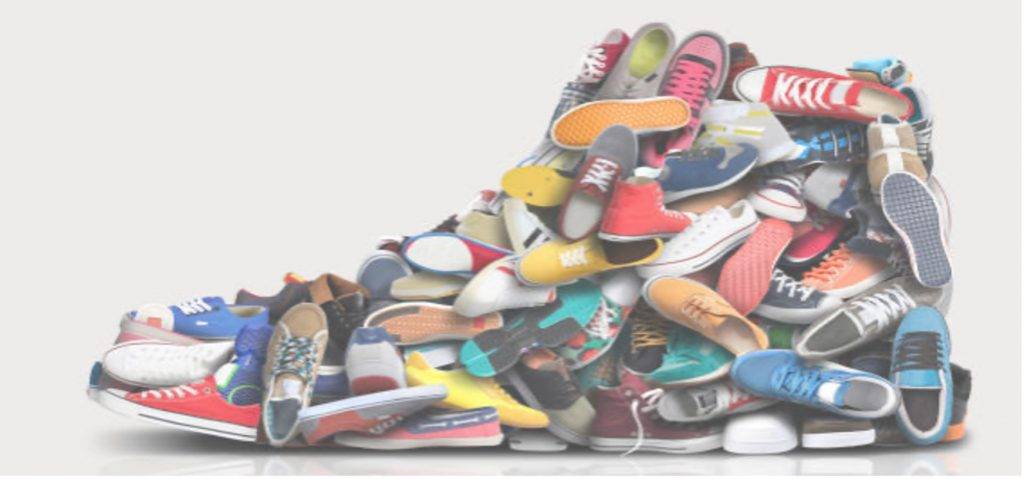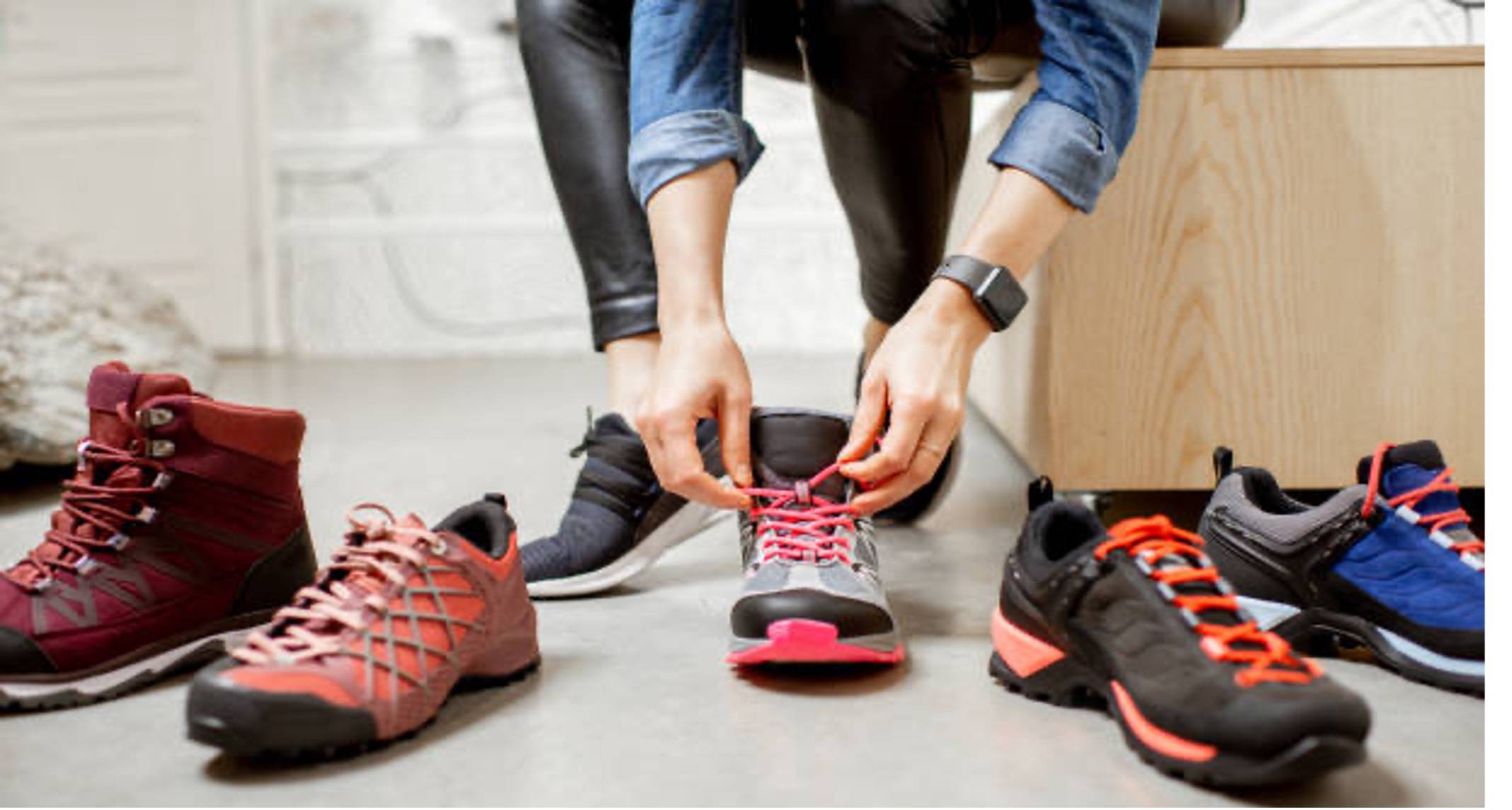What Shoes Should I Wear To Avoid Back Pain?
The longer you wear a pair of shoes, and the more standing or walking you intend to do in them, the more important it is that they offer good support where you need it. The right shoes that fit well and are adequately cushioned can help keep you active and mobile.
Although there are many causes for back pain, one that is often overlooked is shoe choice. When it comes to shoes and spinal health, it’s important to find a shoe with the right fit, the right shock absorption, and the right size heel to help support your spine.
What Type of Shoes Do You Need?
The right type of shoe for one person may not be the right choice for another. Every person has their own unique set of feet. The first step in determining the type of shoe you need is to understand the type of feet you have from one of these categories:
- Balanced – Some people have feet that are well balanced, which means that they have a normal arch in their foot and when they walk, their foot lands on the outside of the heel, rolling inward slightly to help absorb the shock. You can tell if your feet fall into this category if your footprint shows your heel connected to your forefoot by a wide band.
Recommendation: The best shoes for this type of foot include shoes that create stability with a slightly curved shape to help support the foot and the rest of the body.
- High arches – Feet with high arches normally don’t absorb shock very well. You can tell you have a high arch if your footprint shows no band or a very narrow band connecting the heel to the forefoot.
Recommendation: With this type of arch, you need shoes that are well cushioned to help absorb shock and have a lot of flexibility to allow your foot to move fluidly through each step.
- Flat – You’ve likely heard the term “flat feet” before, which simply refers to feet that have a low arch. This is also called overpronation because the foot rolls inward too much when walking. You can tell your feet may be flat by leaving behind a footprint that looks like the whole sole of your foot.
Recommendation: If you have this type of foot, then you need shoes that help to control the motion of the foot with firm midsoles and a lot of stability.
What to Look for When Choosing Shoes

Shoes, sneakers, and other footwear should feel comfortable and not pinch or irritate any part of your foot even when new. When you try on shoes, spend some time walking around in them and paying attention to how they feel. No matter how good they look, don’t buy shoes that are too tight, too loose, unsupportive, or in any way uncomfortable. To raise your chances of finding a comfortable fit, here are some shoe characteristics to look for:
- Moderate Heel Height – Shoes with a slight heel (between 1 and 2 inches) are best, anything over that will not be kind to your back. The fact that your heels are slightly elevated allows your ankle to turn a little bit and rotate differently.
- A heel that’s the same height as or lower than the toe of the shoe, on the other hand, affects the way your leg and, in turn, how your pelvis turns. That, then, will affect your spine and lower back and can cause back pain.
- Cushioning and Shock Absorption – In addition to heel height, how well the shoe’s heel absorbs shock is important to how your back feels. Some people strike the ground harder than others with their heel while walking, sending a shock up their legs and toward their backs. The problem can be exacerbated in those wearing dress shoes.
- Opting for a shoe with cushioning can provide extra shock absorption for runners, and so may be a good option for older runners, runners with a history of stress injury, or runners who predominantly run-on hard surfaces such as pavement.
- Sandals With Arch Support – Generally speaking, sandals and flip-flops don’t provide a lot of support. But special, orthopedic-style sandals can be an exception if they provide the proper amount of arch support.
- Beware of Negative Heels – Flip-flops, while not good for your feet, are acceptable for the beach, but they aren’t recommended all-day footwear as most flip-flops lower your heel below your toes, creating a negative heel and they typically are not thick enough to absorb the shock of each step.
- House slippers can present all the same issues as flip-flops, and that includes flat types of loafers and ballerina-type shoes with a very flat sole. These types of shoes will rotate your pelvis in a way that can worsen back pain.
- Too Hard or Too Soft a Problem – Keeping in mind that you want some shock absorption in your shoes, it’s best to avoid footwear that is very hard and lacks cushioning, like typical dress shoe.
Perhaps surprisingly problematic are shoes with a memory foam or an air cushion because they do not provide the right type of support along with their cushioning. However, these types of cushioning when combined with a more supportive heel aren’t so bad for you.
What Can You Do?
If you’re still having back pain if you are wearing appropriate shoes, it may be time to investigate other reasons for your pain. Forward Health is a good place to start to look for signs of medical problems that might be causing back pain and to examine what aspects of your lifestyle may be contributing to it and what changes you can make.
The first step to ensuring that your feet are well taken care of is to talk Dr. Phil McAllister who can evaluate your gait and determine how your feet strike the ground, including assessing for any issues that may be caused by not addressing your foot type with the right kind of shoe.
Our bodies were made to move to keep our joints healthy. Enhancing your overall health is the name of the game and wearing the right footwear is crucial. Start by avoiding wearing high heels, dress shoes without proper support, or flip-flops for more than walking around the pool. These types of shoes won’t be able to support your foot or your body properly, which can lead to big problems if you wear them frequently.

The information is not intended to provide or be a substitute for professional medical advice,
diagnosis, or treatment. It is for informational purposes only.
.

